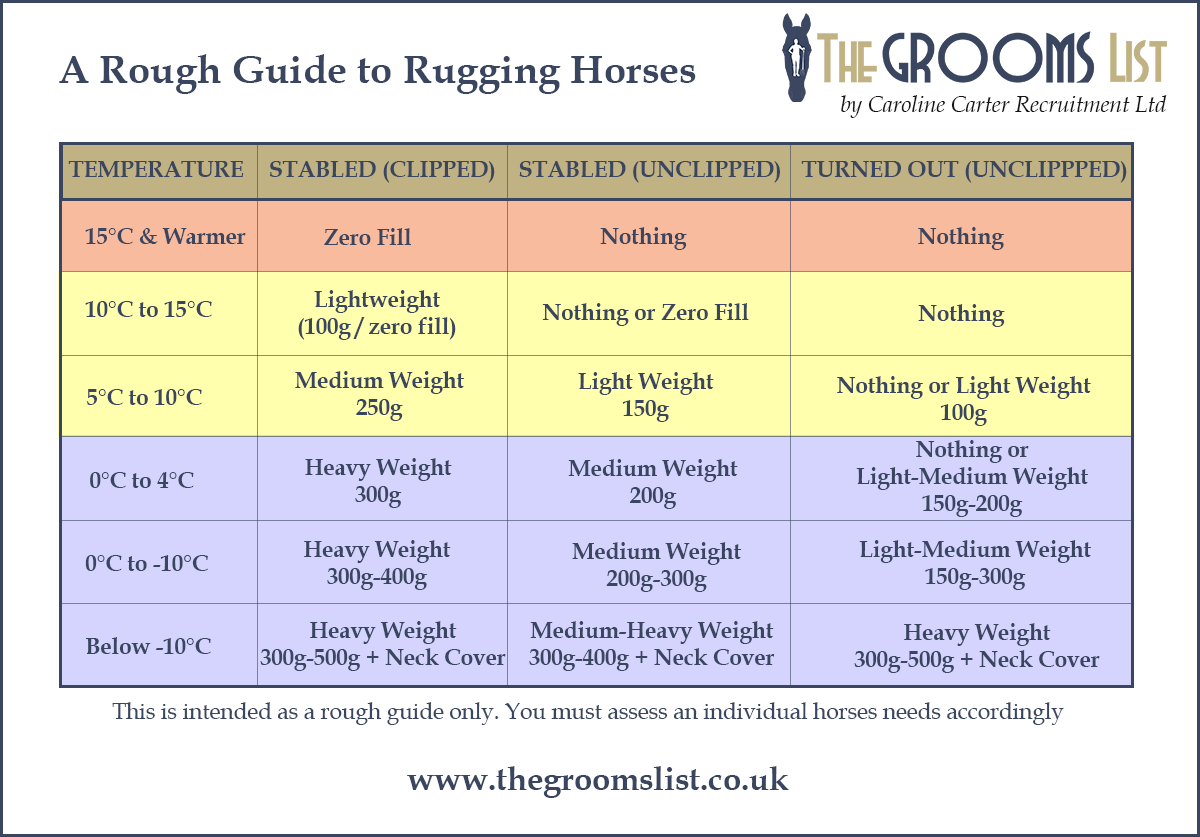Snug as a Bug in a Rug - 13 Tips for Rugging Your Horse
It’s starting to get a little chilly in Australia.
Yes, it actually reached below 10 degrees celcius in Queensland - time to pull out the thermals!
But what about your horse?
Here are a few tips to help you manage your rugging.
Your rugs should be chosen for seasonality first, fit and comfort second, then finally price and looks.
You will likely need more than one type of rug per horse, and possibly even two that offer the same level of protection (in case one is torn or needs washing).
This handy guide (sourced from thegroomslist.co.uk) may help as a guide for your selection but is a guide only.
sourced: thegroomslist.co.uk
Keep an eye on the weather app to help make your mind up about which rugs should be used when. Also handy to have a thermometer outside of the stables or tack shed to assess the ambient temperature locally.
Each horse will need a different level of rugging depending on the season, activity, age, body condition and living arrangements (stabling, clipping etc), so don’t assume that because your neighbours horse has 3 layers, so should yours.
Don’t go throwing on the heaviest rug you can find as soon as it starts to turn cold (unless it is a freaky frozen snap) – your horse will probably be too hot to start and then have nothing to upgrade to when it gets colder.
Don’t assume your horse is hot just because you are – did they just spend the last 30 minutes getting sweaty mucking out their yard?
To assess if your horse is too hot, put your hand inside the neck of the rug and feel just behind the wither. If it is wet, your horse is too hot. Do not go by the warmth of their legs or ears.
To assess if your horse is too cold, put your hand inside the neck of the rug and feel just behind the wither. If it is a bit chilly, your horse could possibly use another layer. Also look for hair standing up – just like us when we get goosebumps.
An underconditioned horse (too skinny, or lost muscle mass) is going to need more carefully controlled temperature with their rugging to avoid expending excess energy attempting to keep warm.
Rugs, like our blanket, will need regular maintenance and replacement. Imagine if you ran around with your doona wrapped around you for 24 hours a day, 7 days a week, 3 months of the year. It will soon lose its fill and comfort.
sourced: http://www.ekonomikmobilyacarsisi.com/rugs/how-to-measure-a-horse-for-a-rug/
To estimate your horses rug size, you can measure from the centre of the chest, around the outside of the widest part of the shoulder, to the buttocks in a line parallel with the ground (see diagram).
A correctly fitted rug should sit above the shoulders on the neck, with the tail flap located at the tail base, the chest buckles on the first or second hole, the leg buckles loose enough not to chafe but not too loose to swing, and the surcingle buckling with a hands width to the belly.

